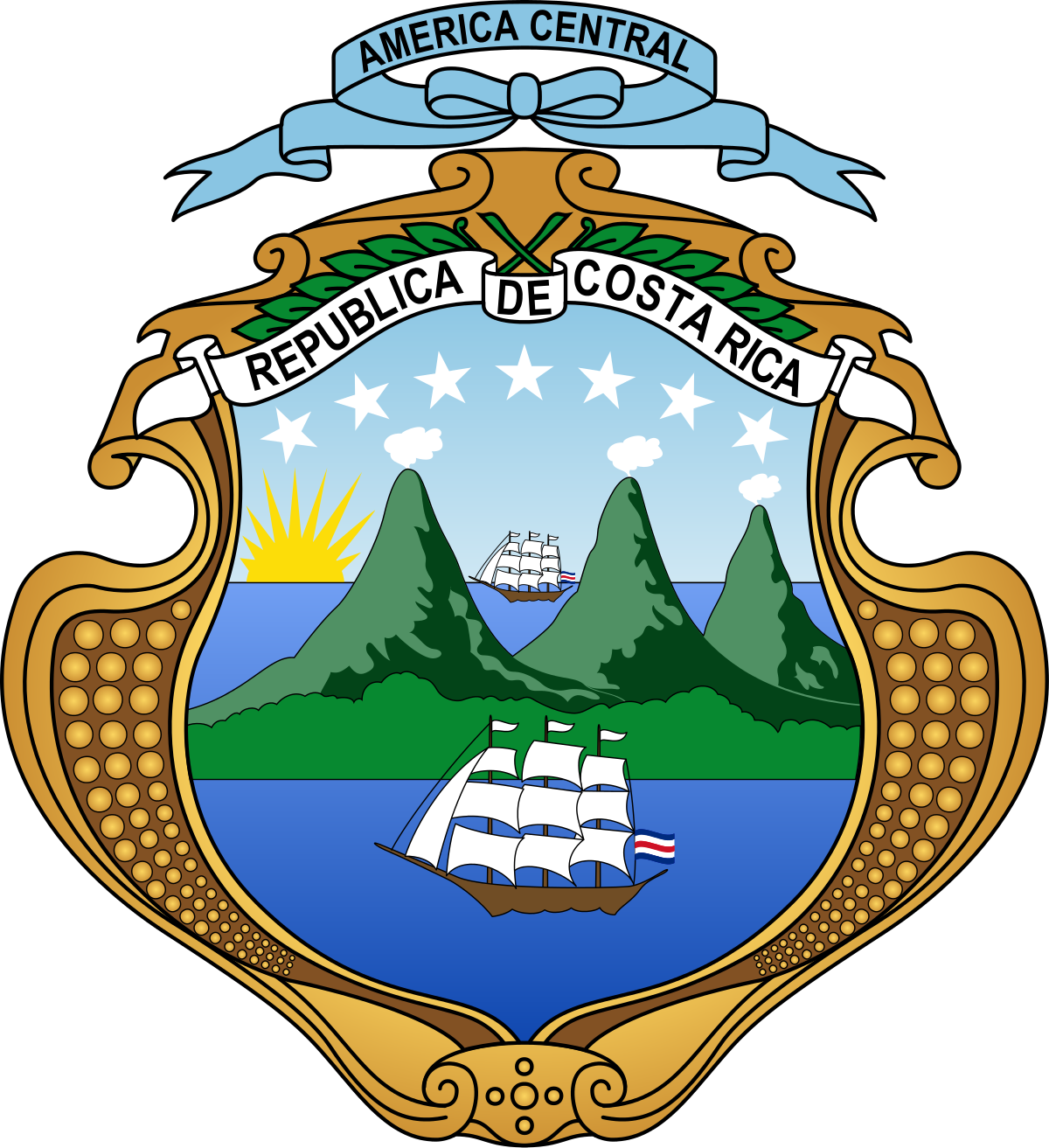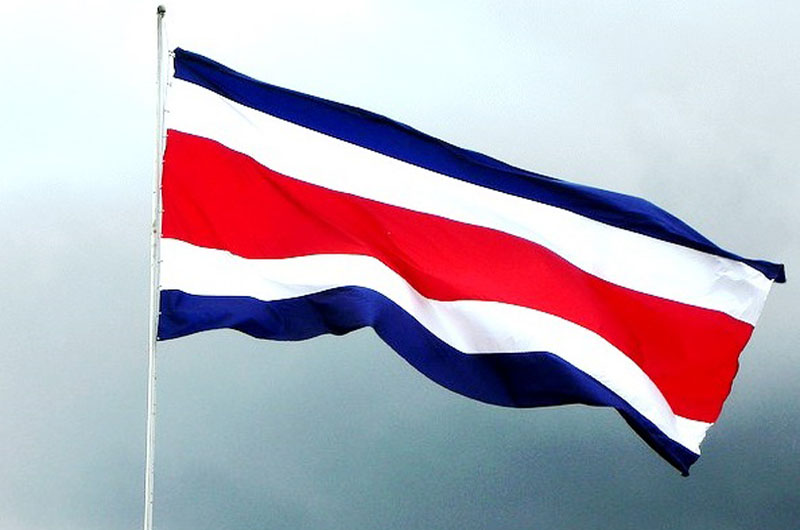 Flag: The present flag was created in September 1848 when Costa Rica became a Republic. The flag is formed by five horizontal stripes: the first and the last are blue, the second and the fourth are white, and in the middle there is a red stripe that doubles the width of each of the other four stripes.
Flag: The present flag was created in September 1848 when Costa Rica became a Republic. The flag is formed by five horizontal stripes: the first and the last are blue, the second and the fourth are white, and in the middle there is a red stripe that doubles the width of each of the other four stripes.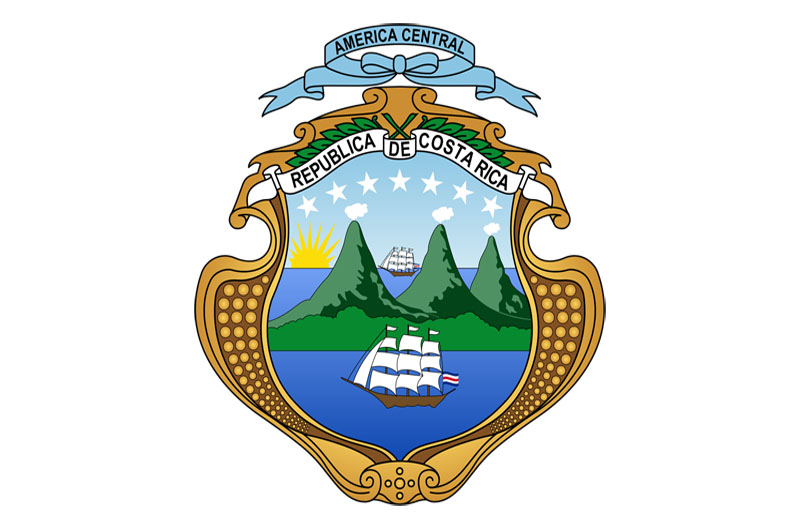 Emblem: Adopted in 1848, Costa Rica’s national emblem is formed by three volcanoes and a vast valley stretching between two oceans, each containing a merchant ship. In the horizon, there is a rising sun between the blue sky and the blue ocean. Two wreaths of myrtle leaves joined by a ribbon bearing the inscription "República de Costa Rica" enclose the national seal at the top. Seven stars forming an arch represent the seven provinces of the Republic. The crown is formed by a blue ribbon with the inscription "América Central."
Emblem: Adopted in 1848, Costa Rica’s national emblem is formed by three volcanoes and a vast valley stretching between two oceans, each containing a merchant ship. In the horizon, there is a rising sun between the blue sky and the blue ocean. Two wreaths of myrtle leaves joined by a ribbon bearing the inscription "República de Costa Rica" enclose the national seal at the top. Seven stars forming an arch represent the seven provinces of the Republic. The crown is formed by a blue ribbon with the inscription "América Central." National Anthem: The music for the national anthem was composed in 1852 by don Manuel María Gutiérrez (1829-1887), conductor of the military band of the time. The lyrics were written by Don José María Zeledón Brenes in 1903.
National Anthem: The music for the national anthem was composed in 1852 by don Manuel María Gutiérrez (1829-1887), conductor of the military band of the time. The lyrics were written by Don José María Zeledón Brenes in 1903.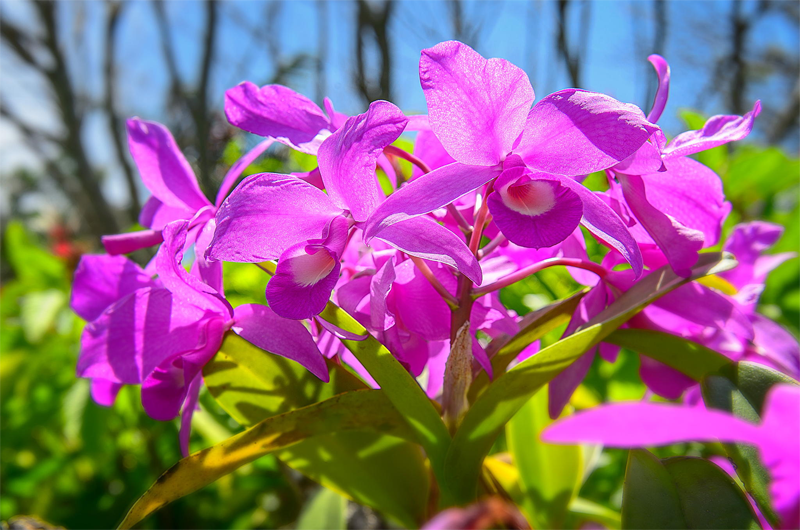 National Flower: Guaria Morada (Cattleya skinneri). This is a native species to the American Continent and grows nationwide.
National Flower: Guaria Morada (Cattleya skinneri). This is a native species to the American Continent and grows nationwide.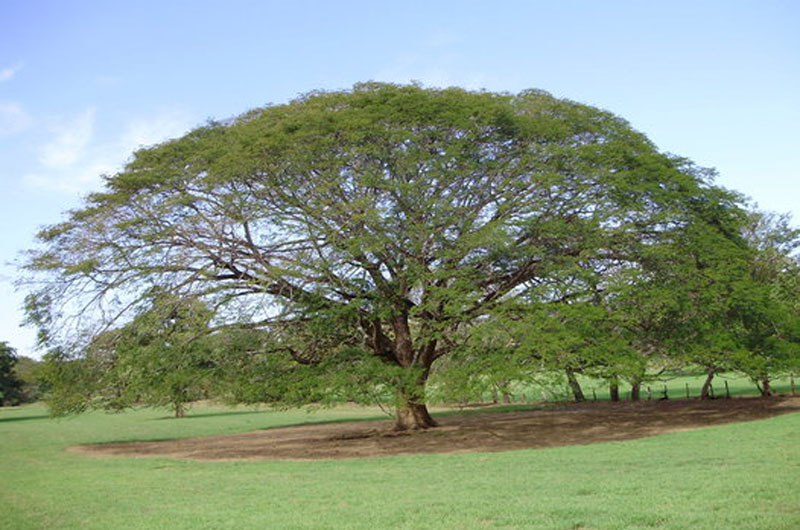 National Tree: Guanacaste Tree (Enterolobium ciclocarpum).
National Tree: Guanacaste Tree (Enterolobium ciclocarpum). Nacional Bird: Yiguirro (Turdus grayi).
Nacional Bird: Yiguirro (Turdus grayi).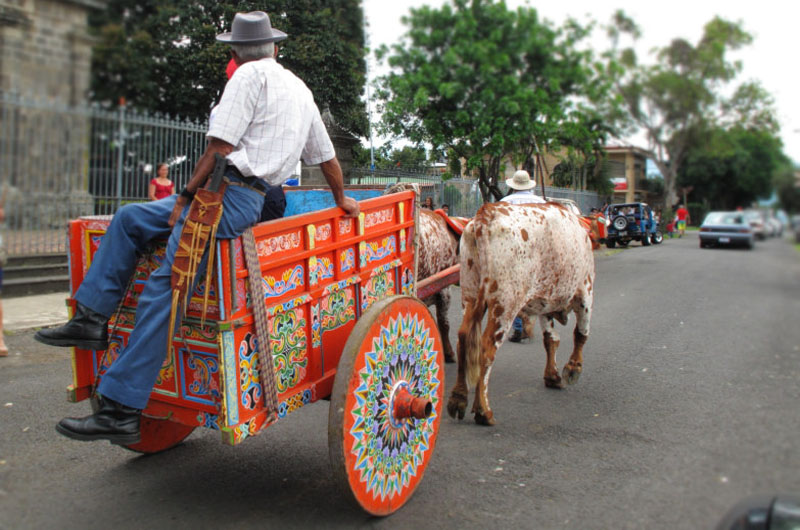 Typical Ox-Cart: In 1988, the Costa Rican ox-cart ("la carreta costarricense") was established as the national symbol of work. Drawn by a team of oxen, the ox-cart was used during the colonial period for the transportation of sugar cane, tobacco, and coffee. Thus, it became a very important factor in the development of agricultural activity of Costa Rica. Today, the ox-cart is one of the handicrafts most representative of Costa Rican culture.
Typical Ox-Cart: In 1988, the Costa Rican ox-cart ("la carreta costarricense") was established as the national symbol of work. Drawn by a team of oxen, the ox-cart was used during the colonial period for the transportation of sugar cane, tobacco, and coffee. Thus, it became a very important factor in the development of agricultural activity of Costa Rica. Today, the ox-cart is one of the handicrafts most representative of Costa Rican culture.
